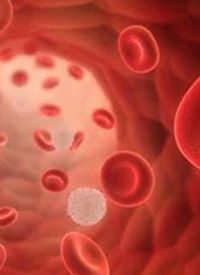Glofitamab Induces 39% CR Rate in Relapsed/Refractory DLBCL
Glofitamab, an investigational CD20xCD3 T-cell engaging bispecific antibody, demonstrated promising results in patients with relapsed/refractory diffuse large B-cell lymphoma who received at least 2 prior lines of therapy.

Glofitamab, an investigational CD20xCD3 T-cell engaging bispecific antibody, demonstrated promising results in patients with relapsed/refractory diffuse large B-cell lymphoma (DLBCL) who received at least 2 prior lines of therapy. In findings from part 2 of a phase 1/2 study (NCT03075696), investigators concluded responses were early and durable.1
A total of 155 patients were assigned to glofitamab monotherapy at step-up doses of 2.5 mg and 10 mg, followed by 30 mg on day 1 of cycles 2 through 12 from January 2020 through September 2021. All patients received pretreatment with obinutuzumab (Gazyva) to mitigate cytokine release syndrome (CRS).
At a median follow-up of 12.6 months (range, 0.1-22.1) the complete response (CR) rate was 39% (95% CI, 32%-48%) as assessed by the independent review committee. The median time to CR was 42 days (95% CI, 42-44).
The objective response rate (ORR) was 52% (95% CI, 43%-60%). Concordance between results according to independent review assessment and investigator assessment was 93% for CR and 86% for ORR.
In comparison, axicabtagene ciloleucel (Yescarta) induced CR rates of 54% in patients who failed on at least 2 previous treatments in phase 1 findings from the ZUMA-1 trial (NCT02348216).2 In results from the multicenter, phase 2 JULIET trial (NCT02445248) in adults with relapsed or refractory DLBCL and DLBCL after transformation from follicular lymphoma, tisagenlecleucel (Kymriah) induced a CR rate of 32% (95% CI, 21.5%-44.8%) in 68 evaluable patients. The FDA approved tisagenlecleucel based on these results in 2018.3
CAR T-cell therapies such as axicabtagene ciloleucel and tisagenlecleucel appear to be more effective in the relapsed/refractory patient population than approved antibody-drug conjugates such as tafasitamab-cxix (Monjuvi) with lenalidomide (Revlimid), pixantrone (Pixuvri), and selinexor (Xpovio). However, investigators noted that CAR T-cell therapies are not consistently available due to logistic, geographic, or resourcing constraints.
Many patients with DLBCL who are selected for CAR T-cell infusion do not receive the treatment because of disease progression or death while awaiting therapy. Furthermore, approximately 40% of patients have durable remission with third-line CAR T-cell therapy, so there is an unmet need for effective and immediately available treatments.
To address that need, investigators evaluated glofitamab. The bispecific monoclonal antibody has a novel 2:1 tumor–T-cell binding configuration that confers bivalency for CD20 B cells and monovalency for CD3 T cells. The agent engages and redirects patients’ existing T cells to eliminate malignant B cells.
Eligible adult patients were diagnosed with histologically confirmed DLBCL not otherwise specified (71%), transformed follicular lymphoma (18%), high-grade B-cell lymphoma (7%), or primary mediastinal LBCL (n = 4%).
The median patient age was 66 years (range, 21-90). Patients had received a median of 3 lines (range, 2-7) of previous therapy. Sixty percent of patients received at least 3 previous therapies, 33% of whom received CAR T-cell therapy previously. Among those who received CAR T-cell therapy, 71% did so as the therapy immediately preceding study enrollment and 89% were refractory.
The median duration between the receipt of CAR T-cell therapy and obinutuzumab pretreatment was 127 days (range, 46-912; interquartile range, 104-212). Most patients (75%) had Ann Arbor stage III or IV disease. Fifty-eight percent had disease that was primary refractory to previous treatment and 86% were refractory to last therapy.
All the patients had a dose intensity of at least 90%. The median duration of glofitamab treatment was 79 days (range, 1-326) and investigators administered a median of 5 (range, 1-13) cycles. Patients with a CR received a median of 12 cycles.
At the data-cutoff date, 66% of the objective responses and 80% of CRs were ongoing. The median duration of objective response was 18.4 months (95% CI, 13.7-not reached [NR]). Objective response was ongoing at 12 months in 64% (95% CI, 51%-76%) of the 80 patients with an objective response.
The median duration of CR was not reached (95% CI, 16.8-NR). CR was ongoing at 12 months in 78% (95% CI, 64%-91%) of the 61 patients who had CR. At the data-cutoff date, 87% of patients with a CR were alive, as were 74% of patients with an objective response.
The 12-month progression-free survival rate was 37% (95% CI, 28%-46%). The estimated 12-month overall survival rate among all 155 patients was 50% (95% CI, 41%-58%).
Just 14 of 154 of patients discontinued treatment because of adverse effects (AEs). Five patients (3%) had a glofitamab-related AE leading to treatment discontinuation (gastrointestinal hemorrhage, myelitis, and CRS in 1 patient each, and neutropenia in 2 patients).
Sixty-two percent of patients experienced grade 3 or higher AEs. Eight (5%) patients experienced fatal AEs (Covid-19–related pneumonia or Covid-19 in 5, sepsis in 2, and delirium in 1). Although 91% of patients experienced glofitamab-related AEs, no deaths were attributed to the therapy. Sixty-four (42%) patients had grade 3/4 glofitamab-related AEs.
The most common any-grade AEs included CRS per ASTCT criteria (63%), neutropenia (38%), anemia (31%), and thrombocytopenia (25%). CRS was primarily associated with the first 3 doses of glofitamab. Four percent of patients experienced grade 3/4 CRS.
Investigators recorded grade 3/4 AEs in 56% of patients, most commonly neutropenia (27%), anemia (6%), and thrombocytopenia (8%). CRS was the most common serious AE (21%) followed by sepsis (4%), tumor flare (3%), COVID-19 (3%), and COVID-19–related pneumonia (3%).
References
- Dickinson MJ, Carlo-Stella C, Morschhauser F, et al. Glofitamab for relapsed or refractory diffuse large B-cell lymphoma. N Engl J Med. 2022;387(24):2220-2231. doi:10.1056/NEJMoa2206913
- Neelapu SS, Locke FL, Bartlett NL, et al. Comparison of 2-year outcomes with CAR T cells (ZUMA-1) vs salvage chemotherapy in refractory large B-cell lymphoma. Blood Adv. 2021;5(20):4149-4155. doi:10.1182/bloodadvances.2020003848
- FDA approves tisagenlecleucel for adults with relapsed or refractory large B-cell lymphoma. News release. FDA. May 1, 2018. Accessed December 14, 2022. https://bit.ly/2kX8e0h



